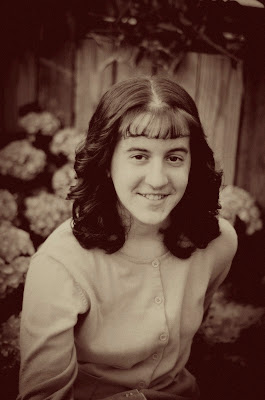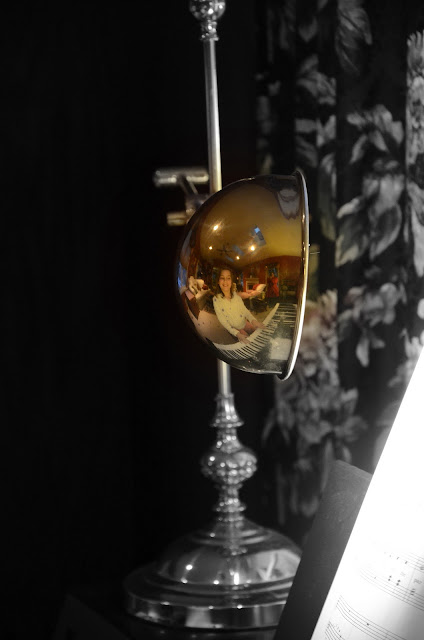Night Photography: How to Take Successful Pictures at Dark – Part 1
As photographers, we all learn very early on that
light is our best friend. That’s why it’s so scary for many of us when we’ve got camera in hand, and the light starts to fade. Most just pack up and go home. Unfortunately, that’s also when the real magic happens. Yes, it does take some practice and a few basic tools, but shooting “in the dark” can be really fun and exciting, and create incredibly dramatic images. Don’t be afraid of the dark…

I captured this image completely in-camera (no Photoshop here) during a long exposure just after dusk. Learn how in tomorrow's Tips and Tricks - Part 2 of this article.
The Magic 15 Minutes of Photography
Before launching my own portrait business last year, I assisted and shot alongside a commercial photographer for 5 years. The majority of our work centered around architecture, landscapes and high-end, large-scale product shots (cars, yachts and jets). We spent most assignments shooting at dawn or dusk, often using extensive strobe lighting to complement the minimal existing light. During those five sleep-deprived years, I learned a lot about shooting in the dark, especially during the Magic or Golden Hour – the first and last hour of sunlight. I personally refer to it as the
Magic or Golden 15 Minutes – 15 minutes
before the sun rises, and 15 minutes
after the sun sets. There’s just something so special about that light, or lack of it, during this small window of time that creates truly magical images as the light builds up over longer exposures. The sky gets this blueish, purplish glow, and all the other lighting in the scene burns in beautifully.
 Getting Started: what you need to shoot at night
Getting Started: what you need to shoot at night
My favorite subject for night photography is usually some type of landscape or architectural scene with some lights throughout the composition. So, that’s what we’ll focus on today.
My first and most important tip to success in shooting “in the dark” is to
be prepared. Have the right equipment and
know how to use it beforehand, so you can capture that incredible image during your small window of ideal lighting time. And don’t be afraid to experiment. Once you know the basics, you’ll find shooting in the dark to be one of the most exciting, fun and creative types of shooting you can do. I honestly get excited just thinking about it!
Tools and equipment – what you’ll need before you venture out
1.
Tripod – A shaky camera just won’t cut it, so your tripod will become your best friend during long exposures. If I’m on the fly without my tripod, I’ll get resourceful finding a flat, stable surface to rest my camera as I shoot. But, a tripod is really the best way to get the exact angle you want while keeping your camera steady. I love my carbon fiber tripod because it’s lightweight for traveling, yet sturdy and stable. Definitely a worthwhile investment.
2.
Cable Release – Again, longer exposures require a very still camera. A cable release, wired or wireless, will minimize any camera shake when you trigger the shutter. If you don’t have a cable release, that’s OK. Most SLRs have a timer mode, which allows for a few seconds of delay before the shutter is triggered to eliminate any camera shake from pressing the button. To use the timer method, just mount your camera on your tripod, compose the shot, and adjust your exposure. (I’ll discuss getting the proper exposure later on.) When you are ready, trip the timer and stand back while the camera takes the shot for you.

I captured this shot experimenting in the tiki hut in our yard just after sunset. Settings: F22, 30 second exposure, ISO 400. The fun thing about this shot is that I'm in it, along with my new hubby. My cable release was wired to my camera and couldn't reach my chair, so I set the timer, and got into position. I like the little bit of blur on us from the 30-second exposure, while everything else is sharp and in focus. Love the blurring fans above us, too.
3.
Wide lens – My favorite lens for night shooting is my 10-22, especially for landscape or architectural images. Wider lenses are generally more forgiving with focus in the dark, and they deliver incredible sharpness throughout the scene, especially at higher F-stops like F16, F18 or F22.
4.
Flashlight – It may sound silly and obvious, but I never shoot at night without my trusty flashlight, Freddie. Not only does “he” help me avoid tripping in the dark, he’s also a great light-painting tool. Freddie also comes in super handy when I need to illuminate a dimly lit area to set my focus. Some of the most beautiful skies happen long after the sun goes down, or before the sun comes up, so be prepared to focus – and travel – safely in the dark.
5.
External Flash (used manually off-camera) – Your external flash can be used as a great source for fill light when triggered manually off-camera. Once I’ve set up my tripod and nailed my focus and exposure, I use the flash in-hand to manually illuminate darker areas off the scene. During a 30 second exposure, I can pop my flash multiple times in different directions. I also play around with the flash power, so I keep it set on Manual Mode and adjust accordingly. When I really want to have some fun, I’ll ask my hubby, Matt, to run around popping my flash on certain dark areas during the long exposure. That’s where it can get really exciting and creative – and fun to watch! The beauty of these long exposures in low light with a closed down aperture is that a moving body won’t register as long as it’s not illuminated. Even if he runs in front of my lens for a second or two, his body won’t register. Pretty cool, huh?

Another shot of the tiki hut just after sunset. Lens 10-22. Settings: F22, 30 second exposure, ISO 400. I used my external flash to slightly illuminate the palm tree in foreground.
Now that we’ve got our equipment list ready, next I’ll explain a little more about your camera settings, focus and exposure. My best advice for beginners is to get out there and start shooting. Play around with variations on your aperture and shutter speed, and watch how minor adjustments affect the overall result. Like any type of photography, experience and practice is the best teacher.
Manual Mode is a must
Because you need complete control over your aperture and shutter speed to nail your exposure, you absolutely must shoot in your camera’s Manual Exposure Mode. You’ll find that as the light changes, you’ll make adjustments with almost every click of the shutter. To complicate things a little further, those adjustments will have
very little or nothing to do with your camera’s internal meter readings. Unfortunately, the meter readings just don’t work in the dark. Say goodbye to Automatic, Program and Priority Modes. Manual Mode is your only reliable option. Additionally, while you may be able to use Auto-Focus on your lens, I always suggest switching your lens to Manual Focus Mode once the focus is set to ensure the focus remains sharp and locked. Look for more focusing tips in
Part 2 – Tips and Tricks, tomorrow.
Setting your aperture (F-stop) and shutter speed for night shooting
Calculating the right exposure for a low-light scene is more of an art than a science. Since your meter readings are not accurate in the dark, they can only be used as a guide. This is where practice and experience pays off. The more you shoot at night, the more your intuition and instincts in estimating exposures will serve you. I promise … after a few shoots in the dark, you will actually start to look at a scene and intuitively know a good place to start with your exposure settings. The beauty of digital shooting is that you can adjust quickly, practice and learn.
When it gets dark, your first instinct (especially portrait shooters) might be to bump up your ISO to astronomical levels and open up your aperture to allow in as much light as possible. For this tutorial, I ask you to deny that urge and go the
opposite direction – keep your ISO at a normal level,
close down your aperture, and shoot a much
longer exposure. It took a while to get comfortable, but now I am a huge fan of long exposures for low-light shooting. Most of my favorite “images in the dark” are captured during exposures as long as 10-30 seconds. As a rule of thumb, I try to keep my aperture (F-stop) closed down as much as possible (F16, F18 or F22), and also keep my ISO at a “more normal” level (from 100 to 500) to reduce noise and maximize my exposure time.

Captured 10 minutes after sunset. Lens: 10-22. Settings: F16, 10 second exposure, ISO 100
While longer exposures are rarely used for portrait work, they are necessary to create these moody low-light images. I allow the long exposure to work
for me, giving time for the light to build. It also provides time for me to get creative with fill flash and movement. (More on that, tomorrow, in
Part 2 of this article.) Keeping your aperture closed down during a long exposure also delivers amazingly sharp focus throughout the scene. If given the choice (which we always have as photographers), I would much rather shoot a longer exposure with a smaller aperture than a shorter exposure more opened up. Plus, one of the coolest natural effects of closing down during a long exposure is that the lights in the scene will
naturally fracture into beautiful stars. No Photoshop here – just the stunning effect of time and F22.

A recent image captured in the tiki hut over the holidays, 30 minutes after sunset. Lens: 10-22. Settings: F22, 13 second exposure, ISO 400. I also used my flash to pop a few times on the ceiling. Notice each point of light becomes a star.
Yes, I know, it’s a lot to absorb. But shooting at night is so exciting and fun – it’s worth all the time and energy you put into it. So get your equipment ready, play around with your camera settings in the dark, and stay tuned for
Part 2, tomorrow, where I’ll expand on tips and tricks for shooting at night. You’ll be a pro before you know it!
About the author: My name is Tricia Krefetz, owner of Click. Capture. Create. Photography, in sunny, Boca Raton, Florida. Although I’ve been shooting professionally for six years, last year I started my own portrait business to pursue my passion of photographing people. I absolutely love sharing shooting techniques I’ve learned over the years with fellow photographers.
You can follow me on Facebook for more tips and examples of night images, and visit my website for my portrait work.
Tags:
camera settings for nighttime photograph,
flash,
Guest Bloggers,
how to photograph at night,
how to take pictures at night,
night time photography,
photographing after dark,
photography tips,
Photography Tips,
using a flash












































